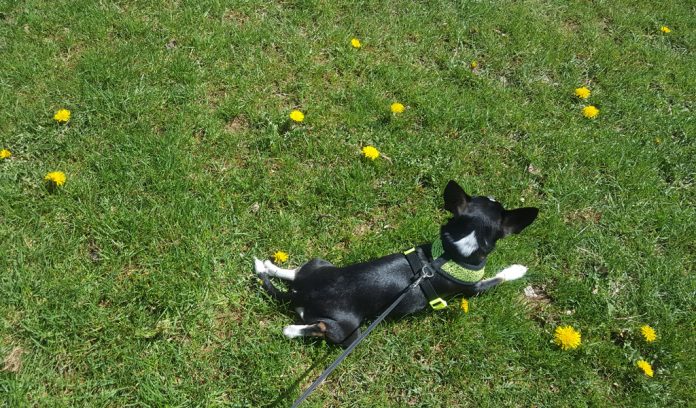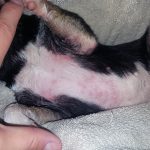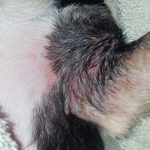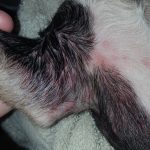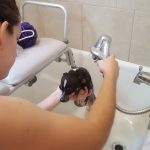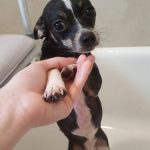Summertime is the best time for many dog owners in Ohio, especially if you love the outdoors as much as I do. Kayaking, hiking, boating, camping — I pretty much take my dogs with me everywhere during the summer. Doesn’t seem fair to leave them behind. And, anyway, they love being outside too.
I have two Chiweenies, weighing in at a grand total of 13 pounds combined, but they don’t think they are small lap dogs. They patrol the yard, scout the woods and sweep the creek for anything and everything dirty, smelly or mildly interesting.
Their love of nature brings preventative care to the forefront for me. That means keeping them up-to-date on shots, using a monthly heartworm preventative and a quality flea and tick preventative, checking them over before they come in the house and sticking to a frequent bath regimen.
In recent years, ticks have been a point of concern for pet owners. Last year, a lot of widely-marked products were rendered completely ineffective against them. This year, they’ve found a product that works. So ticks aren’t the issue, but something has to be, right?
In my experience, this has been the summer for poison ivy rashes. But wait, dogs don’t get poison ivy, do they? Although it’s widely speculated that dogs can’t get poison ivy rashes, that’s not totally true. Some dogs may be immune and different breeds are affected differently, just like people, but some dogs will have a reaction to urushiol — the toxin found in poison ivy.
Dogs can get poison ivy
For the most part, their fur will protect them from getting a poison ivy rash. However, if a dog lies in poison ivy or is extremely short like my pups and its chest and stomach are exposed to the oil, it could end up with a rash.
Some experts believe poison ivy is becoming more potent because of elevated carbon dioxide levels. The plants are growing bigger and stronger, they are producing more urushiol and the toxin is more potent. This could be a contributing factor to noticing poison ivy rashes on my dogs for the first time.
Whatever the case, both pups have been exposed. First, Gus exhibited the rash. It started out looking more like scratches on his chest. As the younger of the two, I just assumed he had been bested on a few wrestling matches. However, when it bubbled up the following day, I immediately recognized it. It wasn’t too irritated or widely spread, so I just bathed him and waited for it to dry up. More than anything I was shocked he got a rash at all because we all know dogs don’t get poison ivy.
But then Nuttie came down with a gnarly rash — red, irritated, blistered and scabbed. And her rash was spread all over her chest and under her armpits. At that point, I changed my tune. I can assure you dogs do get poison ivy.
Poison ivy symptoms in dogs
The rash can range. It can be a mild pinkish color, composed of small blisters, or it can be an angry red, inflamed patch composed of large bumps. Just like human reactions, the severity of the rash is dependent on your dog’s sensitivity to urushiol.
The rash will most likely appear on your dogs stomach or other areas of your dogs body that don’t have much hair. However, that’s not to say your dog can’t get a rash on an area that’s covered by hair. Nuttie’s chest is only covered by a thin layer of hair and the exposure was enough to cause a reaction.
Areas that are heavily protected by thicker hair are less likely to be affected, but remember, they can still carry poison ivy oil and spread it to other things they come in contact with — you.
Treatment
The treatment protocol for poison ivy rashes in dogs is similar to the treatment for humans. More than likely, your dog’s reaction will not be as severe as the average human affected by poison ivy. The rash will probably clear up on its own in time. However, there are a few things you can try to speed up the process or avoid it all together.
Preventative care
The easiest way to treat a poison ivy rash is to prevent it from occurring. You can try:
- Learning to identify the plant and avoid it.
- Giving your dog a bath after its been outside running through a field, wooded area or other location where it may have come in contact with poison ivy. This does two things. For your dog, it removes the urushiol before it has enough time to irritate its skin and cause a reaction. For you, it reduces your chances of getting poison ivy from petting your dog and being exposed to any oil sitting on its fur.
Once you notice a rash
Even if you missed the boat on preventative care and your fur baby now has a rash, there are still things that can be done to help dry up the poison ivy.
- Give your dog a bath. Even if your pup has a rash, washing off an excess oil is a good idea to prevent further exposure.
- Wash your dog with oatmeal shampoo. Oatmeal has natural skin soothing qualities. It will help with the itching. Didn’t your mom make you soak your rashy body in oatmeal baths, too?
- Keep the rashy area clean to prevent skin infections. Gus was pretty good about leaving his rash alone to heal. Nuttie was not. She insisted on nibbling at her chest and scratching her armpits with her hind legs, ripping her blisters open. Leaving open wounds to fester creates an opportunity for an infection to take hold. You may also consider applying regular strength antibiotic ointment.
- Treat the rash with an itch cream. I used Extra Strength Benadryl Itch Stopping Gel. Within 12 hours, Nuttie’s rash looked better. The color began to fade, the blisters started to dry up and she wasn’t itching anymore. If you’re unsure whether or not the itch cream you have is safe for your dog, ask your vet.
- Give it time. With a soothing bath and some itch cream, your dog will be on its way to an itch-free summer. Poison ivy rashes just take time to clear up entirely.






